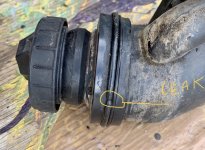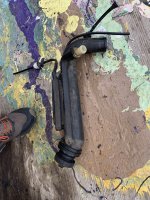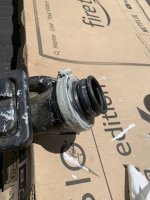I have a strong odor of fuel in the passenger compartment. I have dropped the tank and replaced the hoses and looked everywhere on the underside and engine compartment. I can’t find a leak anywhere. There is no odor in the engine compartment. I can detect a more faint odor on the exterior near the fuel tank.
The odor gets worse when driving up and down steep grades. It doesn’t seem to matter how much fuel is in the tank.
The one thing I haven’t checked is the fuel pump seal. Is this a common cause of fuel odor inside the passenger compartment? There is no evidence of a leak around the fuel pump. But, I guess if it is only vapor it would not leave any tell tale signs.
Im going to replace the seal regardless but if that doesn’t solve the problem… ugh!
The odor gets worse when driving up and down steep grades. It doesn’t seem to matter how much fuel is in the tank.
The one thing I haven’t checked is the fuel pump seal. Is this a common cause of fuel odor inside the passenger compartment? There is no evidence of a leak around the fuel pump. But, I guess if it is only vapor it would not leave any tell tale signs.
Im going to replace the seal regardless but if that doesn’t solve the problem… ugh!



